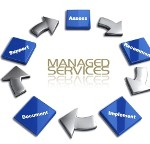Computer users today, including business owners, are hanging onto to their old computer(s) (stand-alone, workstations and servers) when they should upgrade them. Many users are frustrated by the slow, erratic performance of their current systems and call a computer technician to fix the problem when it could be solved by simply upgrading to a later type system. This article will help you decide whether to hang onto what you have or “bite the bullet” and buy another computer.
Every Four Years is the usual point in time that you should look into purchasing a new computer. By this time, your current operating system has had many service packs and updates and sometimes this will slow down the performance of the computer, whether it is a laptop or desktop. Also, viruses and/or malware can cause damage to the operating system, requiring a complete system reload. If you are at the four year mark, you might want to consider upgrading instead of reloading.
Listed below is a list of reasons to upgrade:
CPU Speed: The Central Processing Unit is the “brains” of the computer and is in charge of how much data flows through the unit. The slower the CPU, the slower the data flow. Many times CPU bottlenecks of older systems prevent the unit from operating at an optimum level.
Hard Drive: The hard drive is where the operating system, programs and data reside on (unless the data is saved and backed up elsewhere). An older hard drive that uses platters for reading and writing data to it will be slower than a later model solid state device. Newer hard drives have very fast access speeds compared to older units.
Memory: Random Access Memory (RAM) determines how quickly the operating system, programs and data loads into the “memory” of the computer. Later model computers can handle and usually have greater amounts of memory to facilitate more robust computer operations.
System Board: The system board (otherwise known as the “motherboard”) will have different components on it (cache, chipset, etc.) that will help the computer to run more smoothly and efficiently. The newer the board, the better.
Microsoft Windows 10: If your company is still using computers that have Windows 7 or 8.1 operating systems, companies should upgrade to take advantage of the newest features that Microsoft has to offer. Please contact us if you need your operating system(s) or PC(s) upgraded.
IT Security: Security for your servers, workstations and stand-alone computers is of the upmost importance. Having the right security measures in place is absolutely necessary, especially with the rise of Ransomware. This includes Windows 10 being the dominant operating system within your organization.
These are the main reasons why you should upgrade your computer. The operating system and applications will run better on a newer system. Also, you can take advantage of newer programs (both cloud and non-cloud) that will work better on a newer system as well. Please let us know if you would like to speak to someone about upgrading your laptop, desktop, workstation or server.
If you would like to know more, please contact us at 1-800-871-9683 for a free consultation. Also, if you still have Windows 7 or 8 Computer(s) in your business, please give us a call to help you upgrade to Windows 10 and Office 365. Our email address is: markhuffman@creativebusinesstechnologies.com



